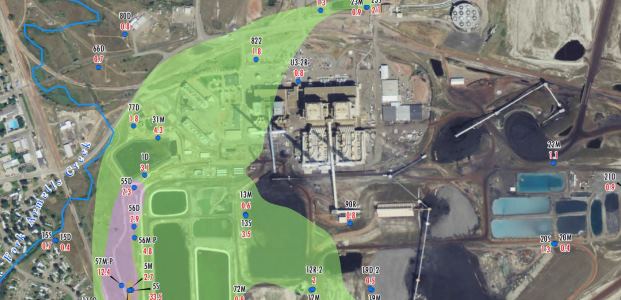
Montana DEQ Seeks Comments on Colstrip Reports
The three reports are required under the Administrative Order on Consent between the agency and Talen Montana, LLC. They concern the industrial wastewater facilities at the Colstrip Steam Electric Station.
The Montana Department of Environmental Quality is seeking public comments on three reports required under the Administrative Order on Consent between the agency and Talen Montana, LLC. They concern the industrial wastewater facilities at the Colstrip Steam Electric Station. The reports are:
- Colstrip Wastewater Facility Closure Plan, Plant Site
- Colstrip Wastewater Facility Closure Plan, Units 1&2 Stage I & II Evaporation Pond Site
- Colstrip Wastewater Facility Closure Plan, Units 3&4 Effluent Holding Pond Site
They provide for control, minimization, or elimination to the extent necessary to protect human health and the environment of post-closure escape of constituents of interest to the environment. The closure plans also include an estimate of closure and post-closure costs for which Talen will provide financial assurance in accordance with the order. All three are available at http://deq.mt.gov/DEQAdmin/mfs/ColstripSteamElectricStation.
The 60-day public comment period started Aug. 14 and will end Oct. 13. Written comments must be received by 11:59 p.m. Oct. 13 and can be sent to Sara Edinberg, Waste Management and Remediation Division, P.O. Box 200901, Helena, MT 59620-0901, or emailed to DEQColstrip@mt.gov. DEQ may also conduct a public meeting on the reports.
The order is an enforcement action taken by the DEQ under the Montana Water Quality Act and the Major Facility Siting Act to address groundwater contamination at the Colstrip Steam Electric Station, which has been divided into three areas: the Plant Site complex, the coal ash disposal ponds for Units 1 and 2, and the coal ash disposal ponds for Units 3 and 4. The order lists several steps that ultimately require remediation of the groundwater contamination, with each step subject to DEQ review and approval:
- Step 1: First, Talen Energy must prepare Site Characterization Reports for each of the three areas that describe the existing conditions, including the extent of the contamination. The reports must also describe what has been done so far to address the contamination and how effective those measures have been in remediating the contamination.
- Step 2: Talen will prepare Cleanup Criteria and Risk Assessment Reports that identify the standards to be achieved in remediating the contamination.
- Step 3: Talen must prepare Remedy Evaluation Reports that evaluate different options for the remediation. DEQ will use the Remedy Evaluation Reports to select a remediation plan for Talen Energy, which will be required to submit final designs based on that plan. After DEQ approves the final plans, Talen will be required to implement the selected remediation.
Site Characterization has been completed for the Plant Site Area, and Talen has submitted a Cleanup Criteria and Risk Assessment Work Plan and Remedy Evaluation Work Plan for the Plant Site Area. The Units 1 and 2 and 3 and 4 Areas are in the Site Characterization phase of the process, according to the state agency.
It says the Colstrip site is "a complex contamination site that requires thorough hydrogeological analysis. The coal ash disposal ponds are part of an evolving, dynamic industrial process. Each of the sites has at least three or four active ponds of different construction and inactive filled ponds. The ponds are surrounded by a complicated network of hundreds of monitoring and capture wells. Contaminated water is pumped back from the capture wells into the ponds. Each active well is individually monitored and sampled for water quality, usually twice a year."
As part of normal operations of the power plant, the ponds are filled with a mixture of water and coal ash. While in the ponds, the water acquires chemicals from the coal ash. Some of the water leaks from the ponds into the neighboring geological materials, contaminating the groundwater. Elevated levels of certain chemicals (dissolved boron, dissolved chloride, and dissolved sulfate) have been found in the groundwater around the ponds.
DEQ reports the town of Colstrip receives its water from Castle Rock Lake that is filled with water pumped from the Yellowstone River and, based on available sampling, there is no indication the contamination has entered the public water supply. However, historically, private wells in the area have experienced contamination.
Talen Energy will continue operating the power plant while the groundwater contamination is addressed under the order.